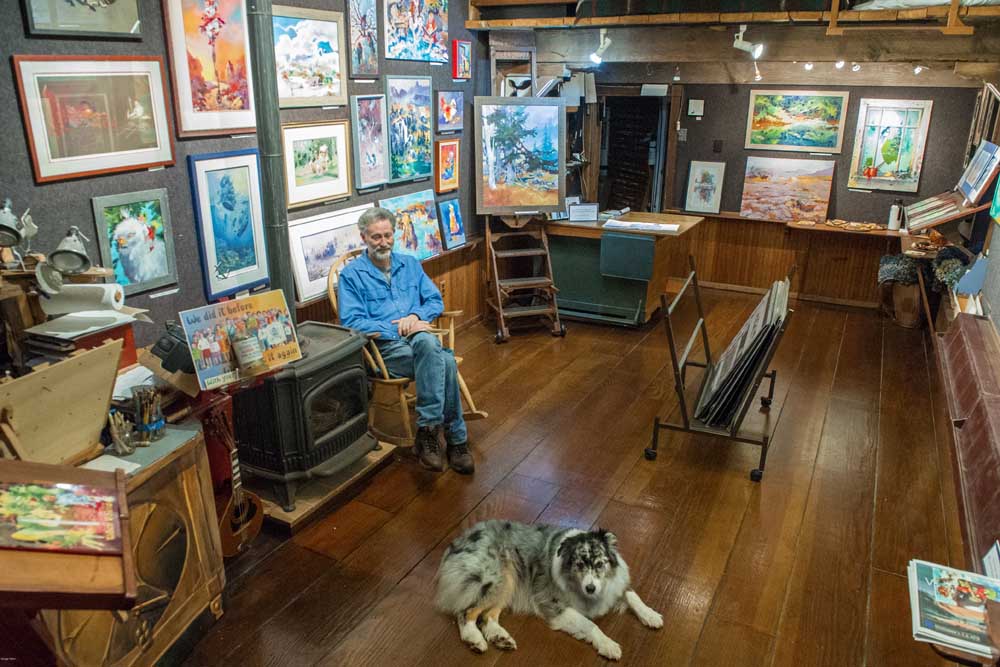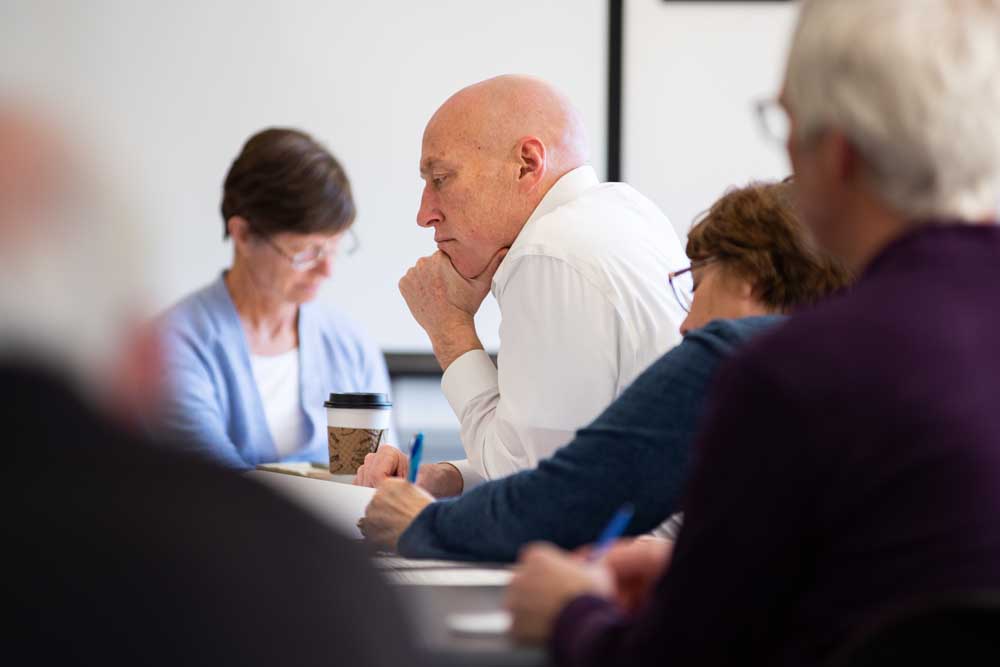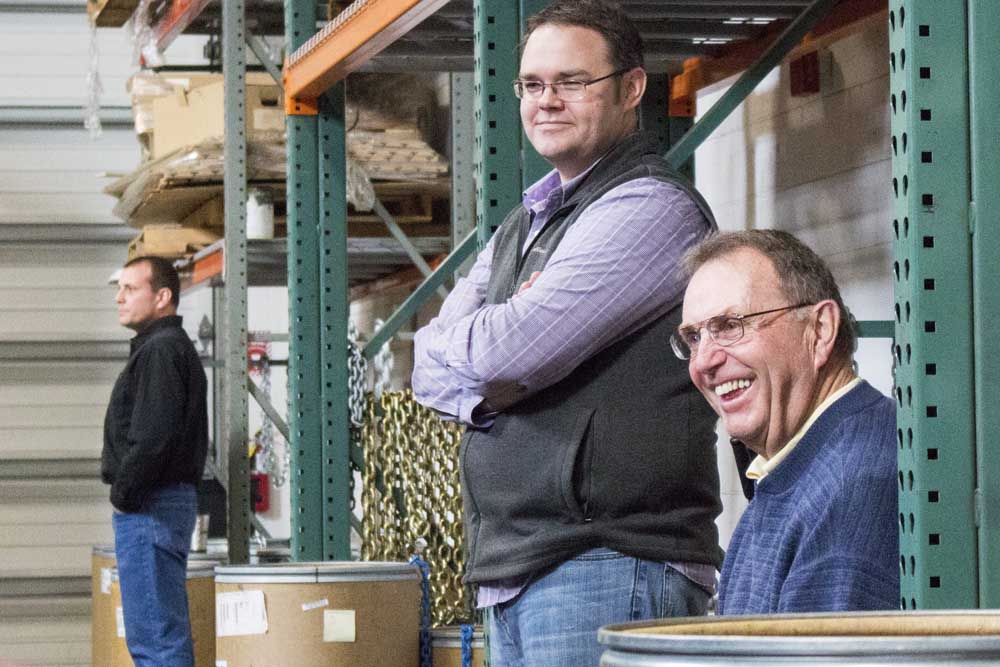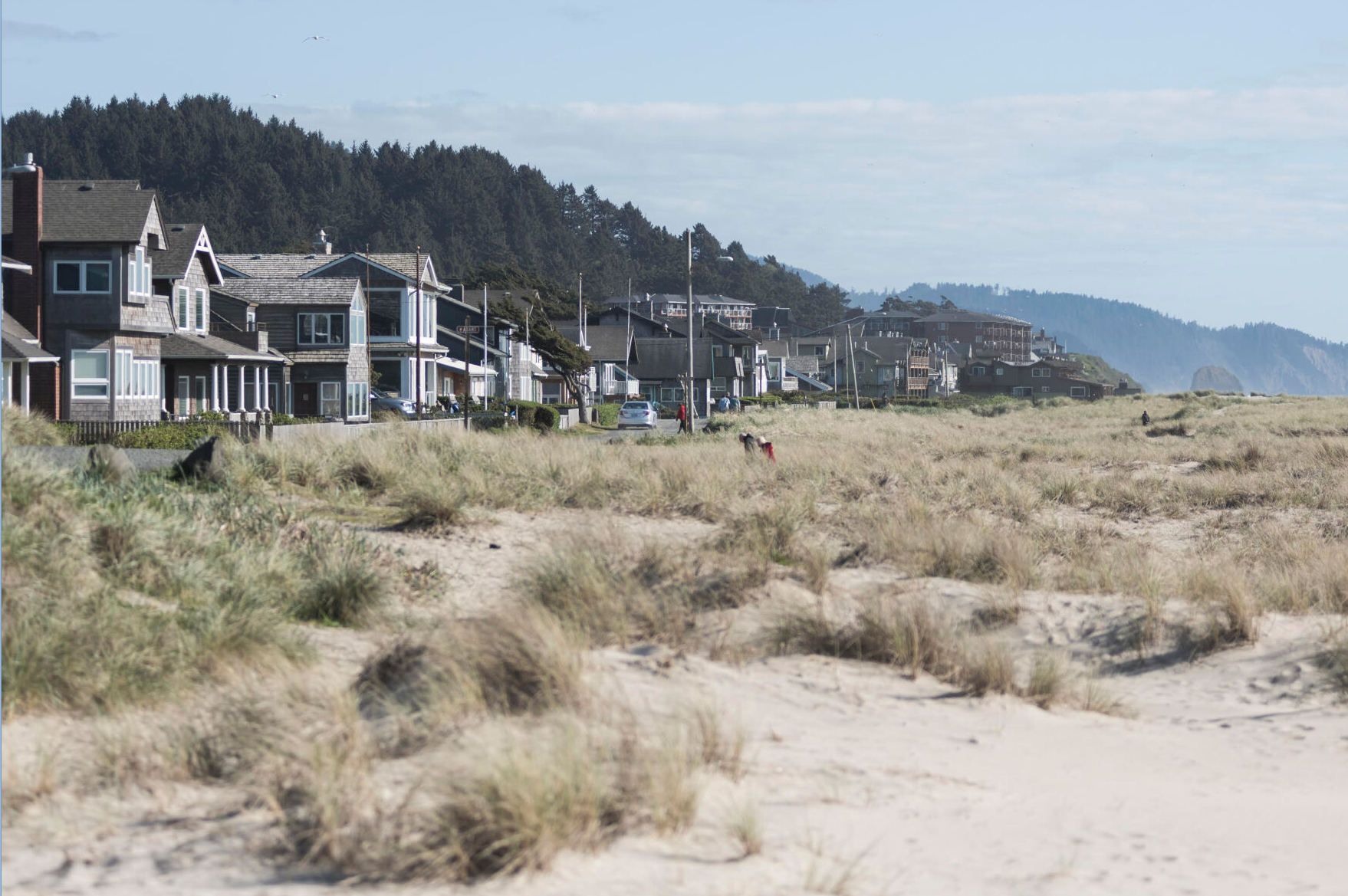Weekend Break: The Steidels of Cannon Beach
Published 1:00 pm Friday, February 21, 2025

- Sam Steidel helped his father operate the family gallery on Hemlock and Second streets.
Once upon a time, artist Bill Steidel settled in a village that had a “brilliant beach with one lonely rock.”
Trending
With dragons guarding Castle Haystack and capricious imps roaming unseen among the villagers, the town between the sea and the mountains provided the artful inspiration for the Steidel family for 64 years.
“There are so many places in this town you can see their hand in,” said local builder John Nelson, who spoke at a celebration of life for Bill and his wife, Sally Steidel, in December. To honor them, friends and family filled the Coaster Theatre Playhouse until there was standing room only.
Bill, 96, and Sally, 94, died in October following long illnesses. Their son, Sam Steidel, a former mayor of Cannon Beach, followed in January.
Trending
The family’s impact on Cannon Beach stretched over decades. Longtime friend Paul Dueber called the Steidels among the “most influential people in Cannon Beach.”
Bill first visited Cannon Beach in 1954 as a U.S. Coast Guard member stationed in Astoria. He later said he couldn’t forget that “brilliant beach with one lonely rock.” Following his marriage in 1955 and a stint as a children’s book illustrator for Simon & Schuster in New York, Bill, who disliked corporate life, moved his family to Cannon Beach in 1960.
Sally taught at Broadway Middle School and later operated a gift shop while Bill pursued his art. He displayed his paintings at several local galleries until he and Sam built their gallery and home on the corner of Second and Hemlock streets in 1985. Looking much like a haphazard gingerbread house, with timbers found on the beach and fairylike windows, the building still catches visitors’ attention.
“When things needed done that we couldn’t do ourselves, we waited for guys to go by and we whistled for them to stop and help. We got a lot of things done that way,” Bill told the Seaside Signal in 1985.
Watercolor wonder
Filled with dancing leprechauns, hot air balloons, dragons playing tic-tac-toe and castles shaped like Haystack Rock, Bill’s watercolor paintings encapsulated the childlike wonder that he brought to Cannon Beach. Bright oranges, royal blues and rich yellows infused his works, along with clouds and mists that enveloped his sprites and sparked magic.
“I like nature and I see things all the time. I have all these stories in my head. When I paint a fantasy, I can’t help but to think storyline, like a movie,” he told The Astorian in 1989.
In addition to his fantasy works, he also painted landscapes of mountains, forests and lakes. Birds — flying through the woods, perched on a limb or brooding over a nest — often appeared in his nature drawings.
In a 1972 interview, Bill said he painted because he had the “inability to express myself verbally.” Language, he said, “is never as valid as a piece of art in transmitting a raw feeling.”
But it was several years before he could rely solely on his art for a steady income. During the early Cannon Beach years, he drove a school bus.
“Bill would get on the bus, and he would start singing ‘This Old Man,’ and we would be singing that all the way into town. That’s how Bill was. He was so full of life,” Nelson recalled.
If the artist didn’t have a paintbrush in his hand, he had a guitar. Although he wrote dozens of songs, many taken from observations of local people and events, Bill claimed he wasn’t a musician, just a “tune strummer.” He often would sit in his gallery, wearing his bowler hat and his paint-spattered denim apron, strumming his guitar.
One tune, “Christmas in Our Home Town,” is an unofficial song of Cannon Beach. Paul Dueber performed the song every year with Bill at the Christmas lamp-lighting ceremony in Sandpiper Square.
Susan Glarum, whose father, Stanley Glarum, taught music, recalled the night that “Christmas in Our Home Town” was written. “Bill would ask him for help when he would write a song to get it on paper,” Glarum said. “One time — it was in the ‘70s, probably, when Bill called Dad in the middle of the night to say, ‘Can I come over? I have to get this song down now.’ And my dad said, ‘Of course.’ So Bill went over to the house, and Dad helped him write the music down on paper and this was ‘Christmas in Our Home Town.’”
Dueber often played guitar alongside others at informal musical gatherings at his grandmother’s house or at hootenannies in the Coaster Theatre Playhouse. Bill’s songs are among those played by Dueber’s group, Thistle and Rose, which performs regularly at local restaurants.
“Bill and Sally — especially Bill — were the catalysts for my passion for writing songs and performing,” Dueber said.
Homegrown theater
The family also shared their passion for theater with Cannon Beach residents.
The Steidel Players, consisting of Bill, Sally and about 40 others, performed pantomimes to prerecorded songs in a Quonset hut where the Cannon Beach Chamber of Commerce building now stands. An old sheet strung across a wire acted as the stage curtain, and stage lights were light bulbs placed in tin cans. Audience members were charged 98 cents to attend.
“No one said a word up there,” Dueber said. “There was no sound coming except from the speakers. But those guys were having a blast.”
When local real estate developer Dick Atherton bought the town’s roller skating rink, he handed the keys to Bill and told him to make it a theater.
Sally once recalled in an interview how residents spent hours cleaning the building. “It had once been used as an old movie house, and we found old Rin Tin Tin posters inside the walls,” she said.
Sally, Bill and several others created a “homegrown Christmas Scrooge” in 1973 to increase winter tourism. Bill played Scrooge for several years. Holiday plays — very often featuring Scrooge — have since become a tradition.
During those early days, the Dickensian village on the stage poured over into the village of Cannon Beach. Many business owners dressed up in similar costumes, and the lamp-lighting ceremony evolved, with men in top hats and waistcoats and women wearing long dresses with full skirts and shawls.
Bill credited the early community involvement with the holiday plays for the growth of Cannon Beach as the arts village it is today.
A few months after a March 1964 tsunami destroyed the Fir Street Bridge on the north side of town, the first Sandcastle Day was held to signal to tourists that Cannon Beach was safe to visit.
In an interview with The Astorian in 2010, Bill recalled that initial contest, which he helped to organize. Some residents decided to do a “community build” to promote the event.
“We were putting on a play at the time — ‘Camelot,’” he said. “They made a big pile of sand about this high,” he added, raising his hand about 6 feet. “I think the concept was for it to look like a haystack. Sally and I got dressed up as a king and queen. I was King Arthur and Sally was Guinevere.”
The first Steidel dragon, 100 feet long, complete with special effects, was built with help from residents in the 1970s. The dragon’s mouth remained open, and local artist Frank Lackaff, armed with two canisters of carbon dioxide, crawled inside. Then, a piece of cardboard was placed between its jaws, and sand was piled in front of that.
The piece was completed just before a crew from a Portland television station came over the hill and saw it for the first time.
“As they came over the hill,” Bill recalled, “smoke was coming through the dragon’s mouth.”
The crew scurried down the hill and set up the camera. Lackaff, still inside the dragon, set off another carbon dioxide canister, and the dragon once again performed.
For 60 years, Cannon Beach’s sandcastle contest has continued, with Bill creating many of the iconic posters promoting the event.
Last year, artist Donald Scott Masterson drew a poster honoring the artist. A young boy, holding a shovel, faces a hazy castle outlined in the shape of Haystack Rock and the sun behind it. The dreamlike drawing is bathed in orange and gold clouds.
Masterson created a special lenticular edition of the poster where, when the poster is moved, the boy transforms into Bill, sitting on a stool in front of the castle, wearing his trademark bowler hat, with a painter’s palette in one hand a knight’s scepter in the other.
“I was honored to be a part of this town and to be able to capture what he would have done this year,” Masterson said at the Steidels’ memorial. “I wanted to capture the childlike wonder and imagination that he had. I’m very grateful for his influence.”
‘It takes a village’
While Bill and Sally were enmeshed in Cannon Beach arts, their only child became involved in village politics.
Sam Steidel led early efforts to prepare for natural disasters and remained an active member of volunteer emergency groups.
An alum of Cannon Beach Elementary School who studied architecture and design, he supported the city’s purchase of the former school when it closed and drew a preliminary design for its renovation as a community center. He was among the leaders of a group opposing a proposed design by city-hired architects. Voters turned down the proposal in 2024.
Sam helped his father operate Steidel’s Art gallery, along with his wife, Deborah Laws-Steidel, whom he met while involved in a production at the Coaster in 1980.
He served eight years on the city’s design review board, eight years on the planning commission and seven years on the City Council, followed by eight years as mayor. Even after his term ended, some still called him “Mayor Sam.”
Together, the Steidels became the “sweetest unofficial family we’ve had,” wrote Kelli Truax-Taylor, co-owner of Bruce’s Candy Kitchen, in a note read by her husband, Brian Taylor, at the December memorial.
“When they say it takes a village to raise a child, I can only smile and be thankful to this beautiful village that raised me and my girls. To Bill, thank you for making our lives magical,” Truax-Taylor said.
Peter Dueber, who often played tunes with his brother, Paul, and Bill, said life with the Steidels was never boring. “You could never outthink him,” Peter Dueber said about Bill. “He always had something special up his sleeve. He had a twinkle in his eye, and Sally was right behind him.”









